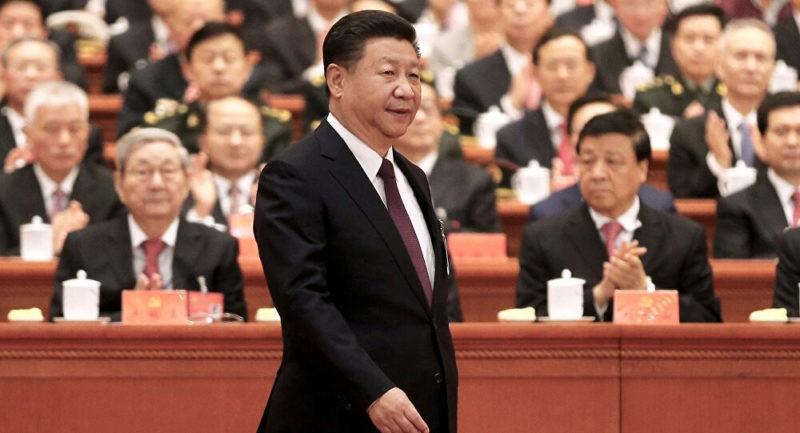George Orwell stated that “Who controls the past controls the future.” The Chinese Communist Party relies heavily on rewriting history, as does every authoritarian government, and it is crucial to the ideological narrative it seeks to create about its rise to power and its place in the world.
China is focusing more and more of its attention now on historical revisionism in relation to territorial claims across its many borders, both land and water. Particularly under the spotlight is China’s southwest border with the Himalayas, where there is a fascination with the ancient kingdom known as “Zhangzhung.”
In western Tibet, Beijing is doing extensive research and excavations related to Zhangzhung, but there is little study of the subject outside of China, according to cultural specialists and archaeologists in the Himalayan Indian state of Ladakh.
Academics disagree on the precise limits of Zhangzhung. Some claim the kingdom included areas of what are now known as Ladakh, Nepal, West Tibet, and Gilgit-Baltistan, while others claim it was much less extensive, only encroaching on the northwest corner of Nepal and a portion of Ladakh. Some people assert that Tibet and Zhangzhung were formerly independent nations. According to Tibetologists, the only thing that is known about Zhangzhung is that it was a kingdom that was roughly located in what is now modern-day Tibet.
The challenge of simply identifying Zhangzhung as a term is also mentioned by academics who specialise in Himalayan history.
Truth and historical accuracy, however, are not crucial for Beijing’s objectives. Since there is little information and clarity around Zhangzhung, it is easy to abuse and mislead, even if China would definitely prefer a more thorough understanding of its scope. The kingdom is significant because it is linked to several cultural and geostrategic variables that China is currently trying to influence. Therefore, Beijing is actively engaging in historical revisionism by funding historians and archaeologists to create a new account of Zhangzhung in order to defend its geographical, cultural, and geopolitical dominance in the area.
The Tibet angle is first. The CCP is preoccupied on denying that Tibet has a unique identity and on deciding who will become the next Dalai Lama. China intends to separate Tibetan culture and religion from its Indian roots by connecting them to Zhangzhung. These three objectives are met. In addition to undermining Tibetans’ feeling of independence and allowing China to appropriate Tibetan history, it also serves as a power move against Beijing’s increasingly hostile neighbour, India. If China claims ownership of the fabled Zhangzhung civilisation and if Zhangzhung is where Tibet as we know it originated, then it follows that Tibet is and has always been a part of China.
This reasoning has several directions for the CCP. Beijing also links the origins of Zhangzhung to its claim to Tibet in order to defend its possession of that region. In other words, if Zhangzhung is the origin of Tibet and Tibet is a part of China, then Zhangzhung and all it may (or may not) have included, such as portions of Nepal, India, and Pakistan, are also a part of China.
These claims are deceptive. According to archaeological evidence, the main religion in Tibet, Tibetan Buddhism, is descended from Indian Buddhism, which was spread from Kashmir through Ladakh and then to Tibet and China. Due to their common past in terms of culture and religion, the majority of Tibetans have a certain amount of kinship with India.
Instead of mainland China as the CCP would like us to think, Zhangzhung is considered to have had contacts with what is now India.
Owning and controlling Zhangzhung is viewed by China as a zero-sum game with serious repercussions. The ownership of the historic Zhangzhung civilization is ours; however, for a considerable amount of time, authority for the interpretation and discourse of power was in the hands of foreigners, according to a quotation from Bai Gengsheng, a professor who has held positions at the government-sponsored Chinese Academy of Social Science.
Additionally, a Chinese campaign dedicated to Zhangzhung that was started in 2013 and was supported by the Central Propaganda Department with the following objectives: [contributing] to a more thorough and accurate comprehension of the religious and cultural legacy of Tibet… fostering the flourishing and renaissance of Chinese culture, as well as encouraging interethnic dialogue, fostering greater ethnic harmony, and more. The project involved a number of participants, including monasteries, academic institutions, and party leaders; this degree of cooperation highlights the fact that the CCP as a whole views the effort as having political significance.
Governments, especially authoritarian ones, are continuously revising history. But these are typically more natural, addressing issues that are already part of the zeitgeist and public dialogue of the day. Zhangzhung stands out because China revived the idea nearly literally and from scratch, combining this with a well-planned strategy that involves official funding and coordinated propaganda dissemination activities. This successfully serves as an illustration of China’s long-term plan, but in a manner that no one foresaw. Other countries must start by studying history if they wish to comprehend China and its objectives.

Leave a Reply